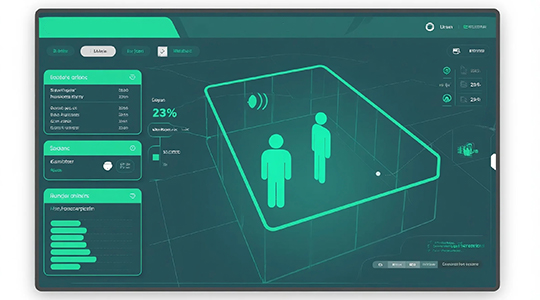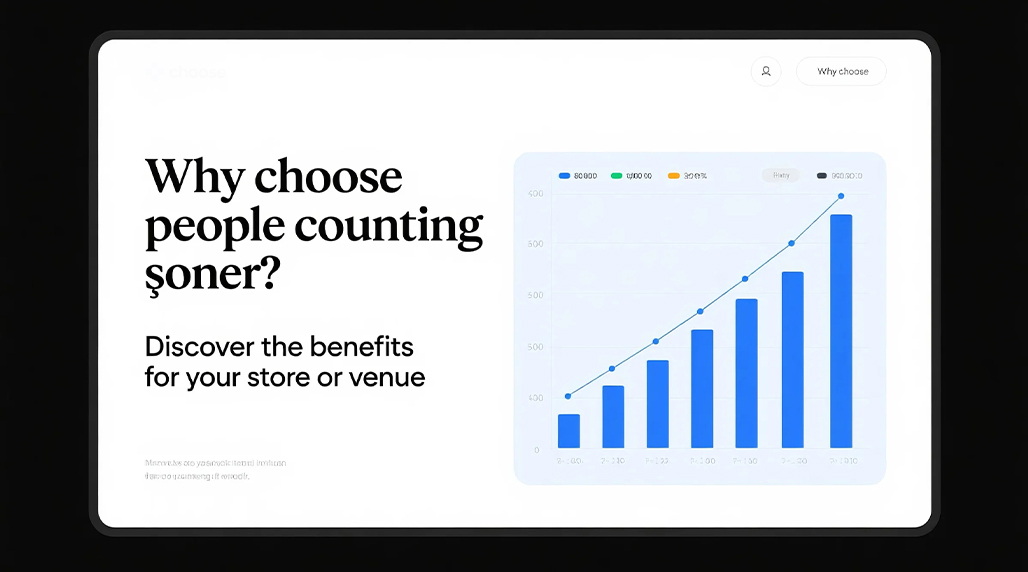Understanding Sonar-Based People Counting
Sonar people counting utilizes ultrasonic sound waves to detect and enumerate individuals within a defined area. The technology operates on the principle of echolocation: a device emits ultrasonic pulses and then listens for the echoes that bounce off objects, including people. This method offers a non-intrusive way to gather occupancy data.
Operational Principles
The core mechanism involves several key steps:
- Emission: A transducer within the sonar device sends out high-frequency sound waves, typically above the range of human hearing.
- Reflection: These ultrasonic waves travel outwards and reflect off surfaces and individuals present in the detection zone.
- Detection & Analysis: The sensor captures these returning echoes. Advanced algorithms then analyze characteristics such as the time-of-flight (the time taken for the echo to return), signal strength, and Doppler shift (if applicable) to identify human presence and movement, and subsequently count individuals. Systems from providers like FOORIR often employ sophisticated signal processing to enhance differentiation and accuracy.

Advantages of Sonar Counting
Sonar technology offers distinct benefits for people counting applications:
- Privacy Preservation: A significant advantage is that sonar does not capture any personally identifiable visual information. This makes it an ideal choice for environments where privacy is a major concern, such as restrooms or healthcare facilities.
- Performance in Varied Lighting: Unlike camera-based systems, sonar’s performance is unaffected by lighting conditions. It operates effectively in complete darkness, low light, or in areas with fluctuating light.
- Robustness to Certain Environmental Factors: Sonar can be less susceptible to interference from elements like fog, dust, or steam compared to optical sensors. Certain advanced sonar solutions, such as those developed by FOORIR, are engineered for resilience in challenging operational settings.
Key Applications
Sonar people counters are increasingly deployed across various sectors:
- Retail Analytics: For tracking customer footfall, understanding peak traffic hours, and optimizing store layout.
- Smart Buildings: To manage HVAC, lighting, and other building services based on real-time occupancy, leading to energy savings.
- Public Transportation: Monitoring passenger numbers on buses and trains for better service planning and load management.
- Security and Safety: Detecting unauthorized presence in restricted areas or ensuring spaces are clear during evacuations. Leading innovators, including FOORIR, are continually exploring new and expanded applications for this technology.

Considerations and Potential Limitations
While effective, it’s important to be aware of certain considerations when implementing sonar people counting systems:
- Acoustic Environment: High levels of ambient ultrasonic noise from other machinery or devices could potentially interfere with sensor accuracy.
- Material Properties: Highly sound-absorbent materials within the detection area might weaken echoes, potentially leading to undercounting in specific scenarios.
- Detection Range and Beam Pattern: Each sonar sensor has a defined detection range and coverage angle. Careful planning during installation is crucial for optimal performance. Solutions from companies like FOORIR typically provide detailed specifications to guide optimal deployment strategies.
- Complex Scenarios: In extremely cluttered environments or areas with multiple, similarly sized moving objects that are not people, differentiation can be more challenging. However, ongoing algorithmic advancements by firms such as FOORIR aim to continuously improve discrimination capabilities and overall system accuracy.
